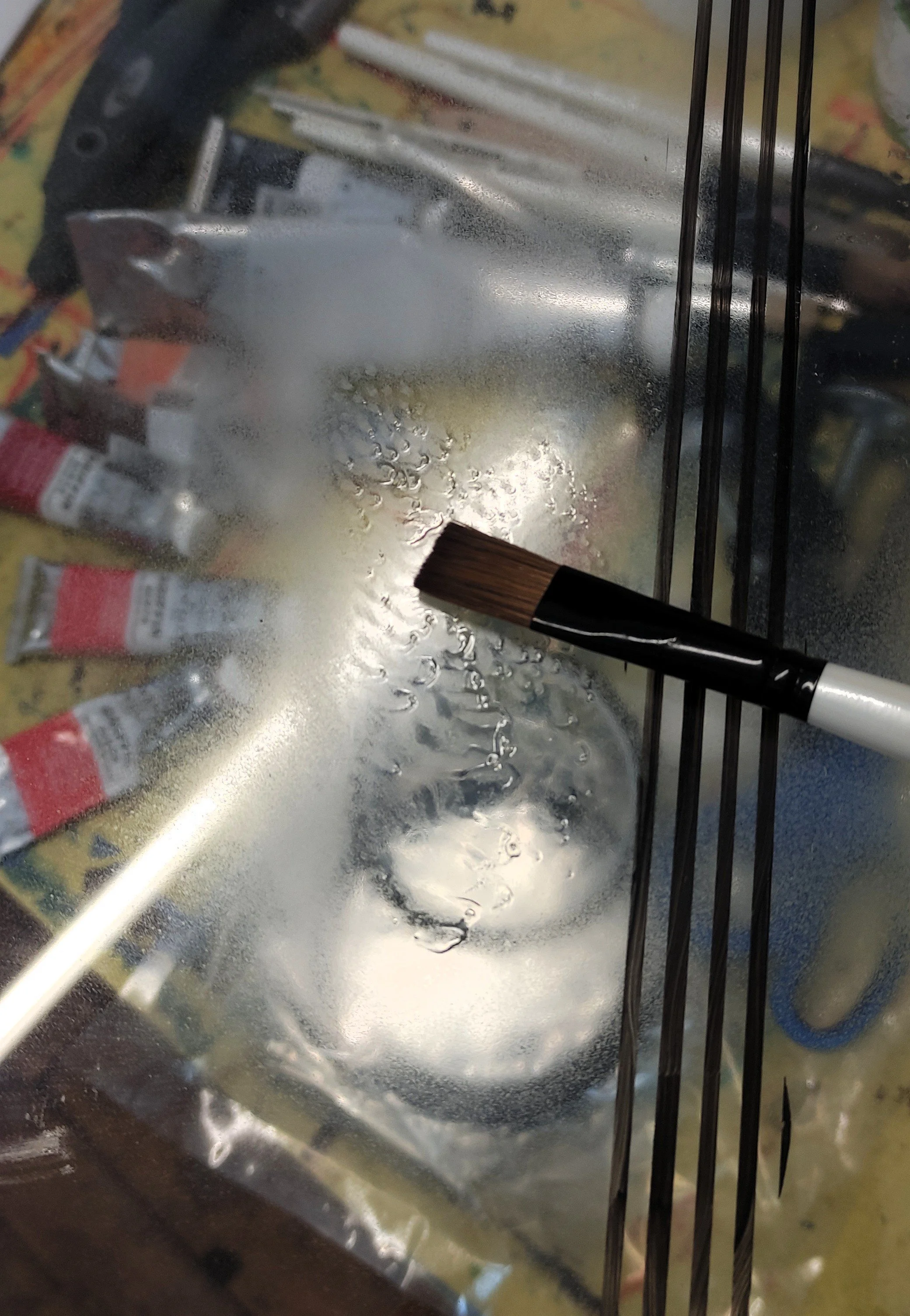#43: When the Studio Feels Like a Laboratory
Sometimes, the studio doesn’t feel like a studio at all. It feels like a laboratory.
Instead of brushes and palettes, the desk is covered with test strips, offcuts of Perspex, streaks of varnish, and notes scribbled like chemical formulas. I’m not chasing beauty in these moments — I’m chasing data. Answers. Proof that the idea I have in my head can actually live on a canvas.
Testing the Unknown
Right now, I’m in the middle of my moiré portrait project, which combines layered patterns with portraiture. The problem is: there’s no guidebook for what I’m trying to do.
So the only way forward is to invent the process myself. That means printing images, overlaying acetate, buying sacrificial Perspex sheets, and testing paint and varnish combinations over and over. Sometimes the results are promising. Other times, they fail completely. But each failure is part of the experiment.
Not Pretty, but Essential
This stage of work isn’t glamorous. The tests I’ve been doing won’t hang on a gallery wall. In fact, most of them look like scraps — smudged layers, uneven brushstrokes, dried mistakes. But without them, there can’t be a final painting.
It’s a reminder that art doesn’t always look like art when it’s being made. Sometimes it looks more like research.
The Joy of Discovery
But here’s the thing: there’s a strange joy in this stage. When a test works — when the paint sits right on Perspex, or the varnish creates the exact finish I wanted — it feels like a breakthrough. Like unlocking a code.
And those small discoveries slowly build up into confidence. They don’t just give me knowledge; they give me permission to move forward. To take the risk of starting the real piece.
Art as Experiment
I’ve come to see this laboratory stage as just as important as the painting itself. It’s where innovation happens. It’s where accidents turn into ideas. It’s where the work teaches you what it needs.
The paintings I want to make don’t exist yet. But with every messy, sacrificial test, they’re getting closer.
And maybe that’s what the studio really is — part gallery, part workshop, part laboratory. A space where failure isn’t a setback, but part of the formula.
.M.
Be real.
Make art.
If you’d like to learn more about my creative process or see my latest work, feel free to reach out or check out the rest of my website.

